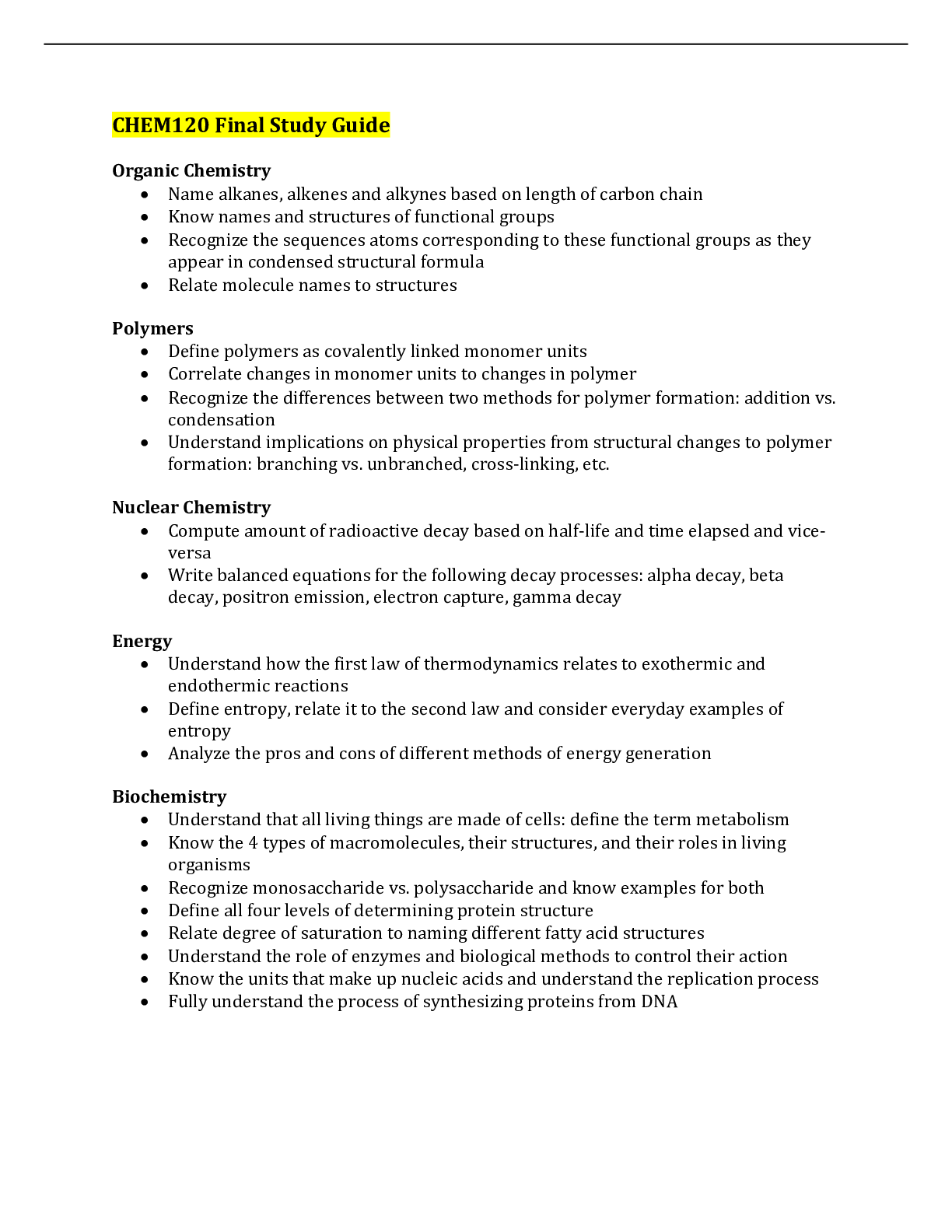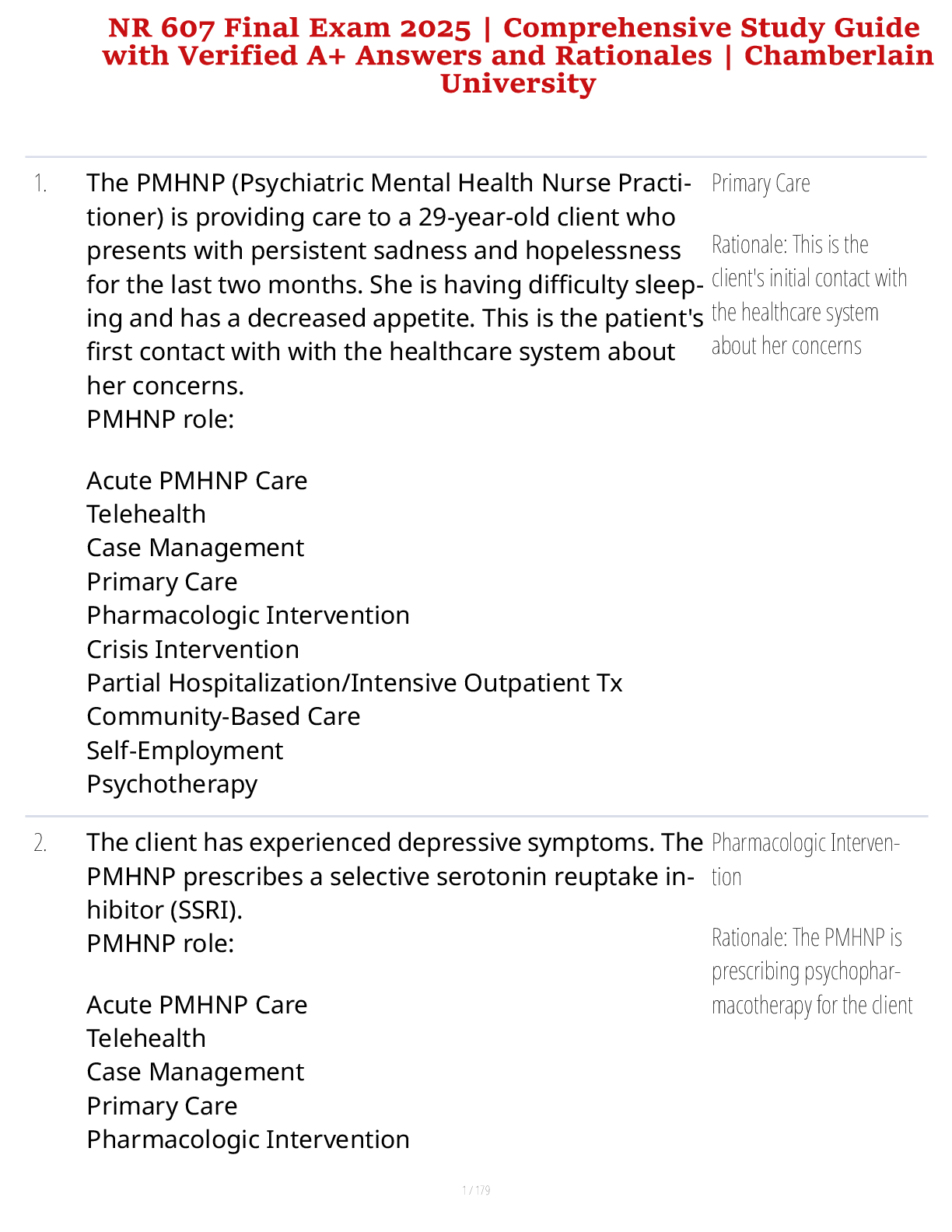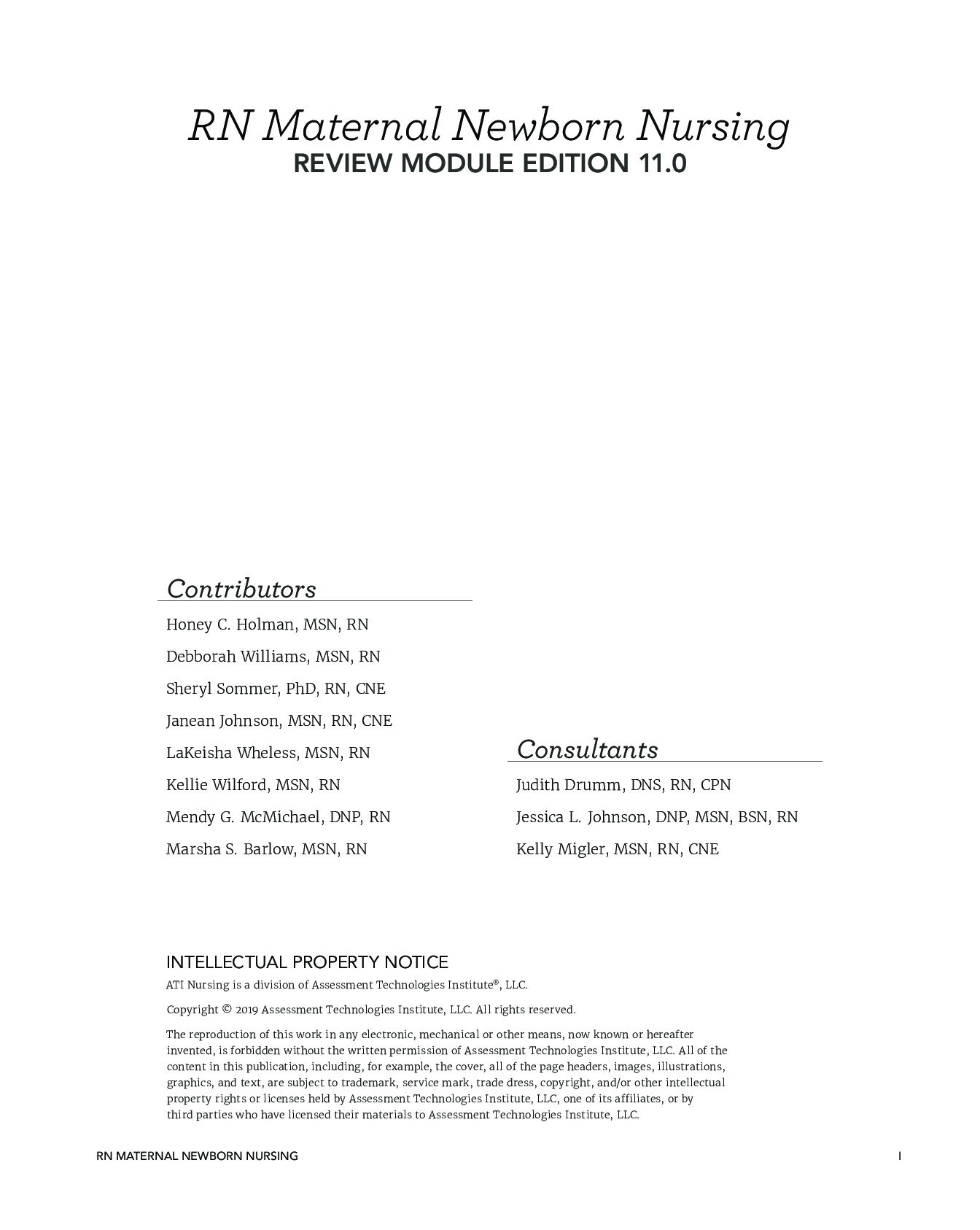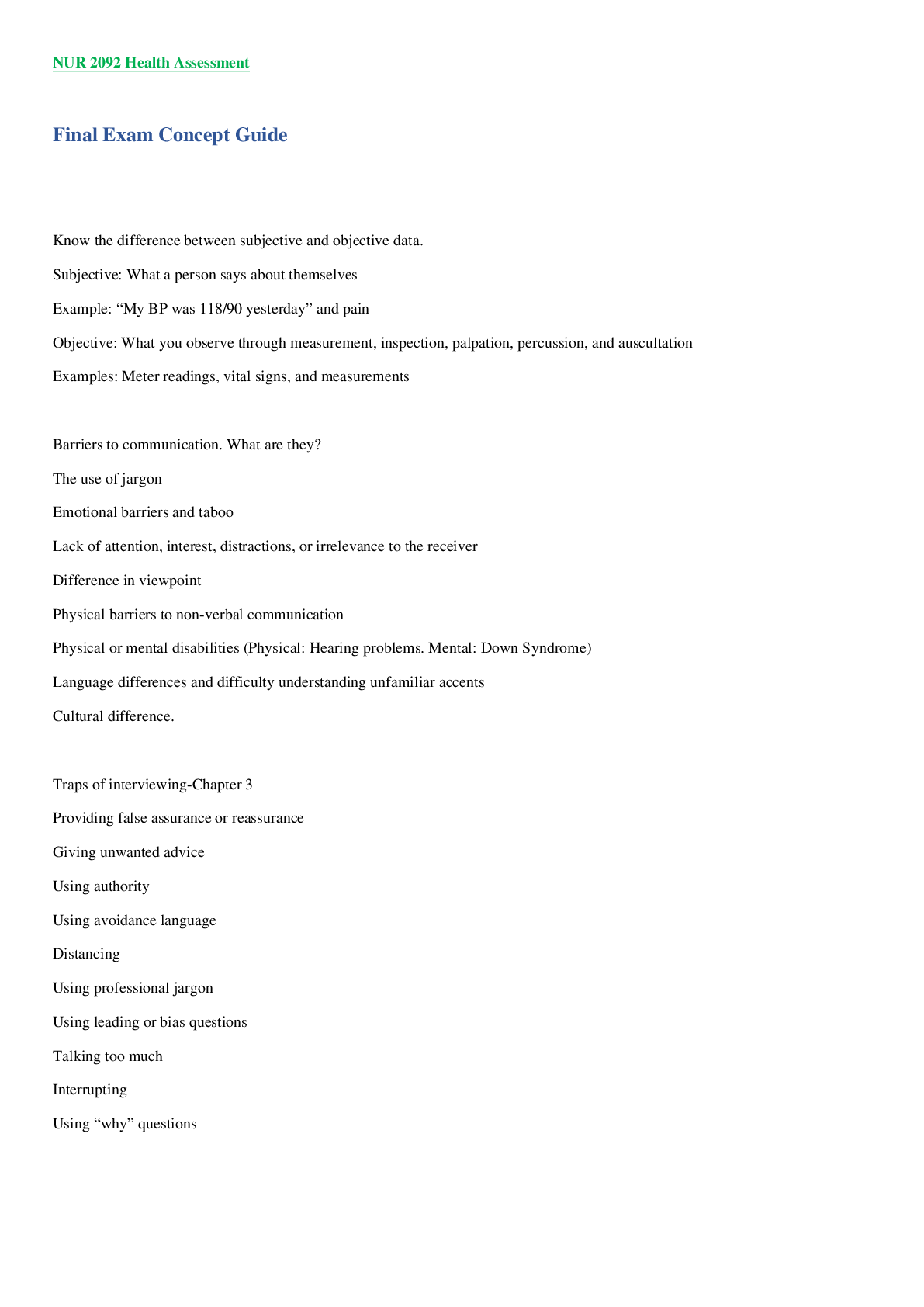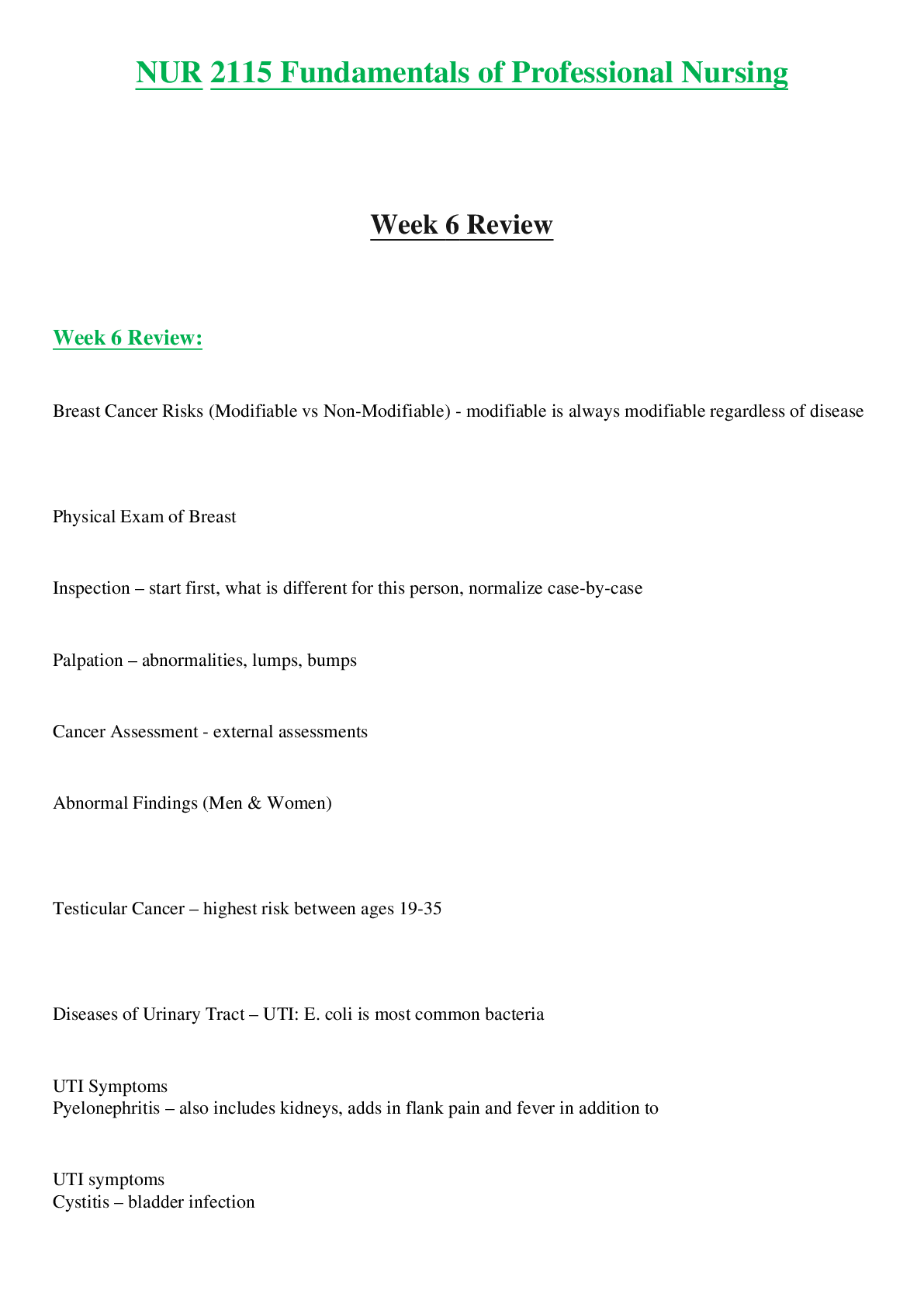*NURSING > STUDY GUIDE > NR 511 FINAL EXAM STUDY GUIDE – QUESTIONS AND ANSWERS ; WEEK 5 AND 6 (All)
NR 511 FINAL EXAM STUDY GUIDE – QUESTIONS AND ANSWERS ; WEEK 5 AND 6
Document Content and Description Below
NR 511 FINAL EXAM STUDY GUIDE – QUESTIONS AND ANSWERS ; WEEK 5 AND 6 Week 5 Identify the population most commonly affected by bacterial prostatitis: Acute bacterial prostatitis occurs predominantl ... y in sexually active men between the ages of 30 and 50 years old, whereas chronic bacterial prostatitis is most common in men older than 50. Prostatitis (Acute, chronic, nonbacterial) Risk factors Age> 50 yrs, Hx of prostate calculi, BPH, prev. UTI, recurrent UTIS acute and chronic-> strep. Faecalis and staph. Aureus are most common physical exam: abd. Exam to detect distended bladder, costovertebral angle tenderness, genital exam, digital rectal exam acute: warm, tense, swollen, boggy and very tender prostate vs chronic: normal or little boggy diagnostic testing: U/A (PYURIA + for all three), midstream urine cand s, 츛, urethral swab for GC AND CT, cystoscopy, transrectal ult Acute-- treatment 14 to 28 day regimen-cipro 500 mg q 12 hr, levofloxacin 500mg daily or doxycycline or TMP-SMX STD coverage for ABP; single dose IM ceftriaxone 250 mg + single dose azithromycine or doXy 100 mg BID 7 D Supportive measure: antipyretics, nsaids, hydration, stool softeners Chronic-treatment 5 to 12 week antibiotic course with same meds + alpha-blocking agents to relax the smooth muscles around prostate Nonbacterial prostatitis- treatment FEFER TO UROLOGIST Discuss the physical exam characteristics of acute bacterial prostatitis: urinary complains (frequency, urgency, nocturia, dysuria) pain & discomfort (LBP, penile, scrotal pain, fever, chills, malaise or painful ejaculation, arthralgia, myalgia) Chronic bacterial s/s: symptoms often absent, perineal pain, LBP, lower abd. Pain, scrotal or penile pain, pain with ejaculation, dysuria… Discuss how the Phren sign can differentiate between testicular torsion and epididymitis: The most common symptom in testicular torsion is sudden, severe pain accompanied by swelling of the affected testis. The patient may have pain for several days without seeking medical attention. The most common finding on clinical exam is the absence of the cremasteric reflex and unlike in epididymitis, elevation of the affected testis does not relieve the pain (negative Phren’s sign). Epididymitis Can affect any age in male, Hx of unprotected intercourse, a new sexual partner, Hx of UTI or urinary discharge Symptoms Unilateral scroll pain which radiates along the spermatic cord or to the flank HALLMARK SYMPTOM: RELIEF OF DISCOMFORT WITH ELEVATION OF TESTIS AND EPIDIDYMIS Tx: same antibiotics ceftriaxone 250mg IM TIMES 1 and azythromycine 1 gm po times 1 BPH Most common condition in males > 40 yrs Risk factors: ? Size does not correlated with severity of symptoms BPH= smooth and enlarged, if hard, suspect cancer Treatment Avoid caffeine and alcohol Conservative tx vs surgery Alpha blockers (relax smooth muscle)Tamsulosine 0.4-0.8mg qd, doxazosin 4-8 mg qd 5-alpha-reductade inhibitors finasteride 5mg qd or dutasteride 0.5 mg qd Testicular torsion- twisting or rotation of the testes around the spermatic cord, blocking blood to the testes UROLOGICAL EMERGENCY!! (> 6 hrs, viability 10-15%, >24 hrs, below 10%) Sx: mostly seen in adolescent and young adults; trauma, exercise, extreme cold, absence of the cremasteric reflex, unlike in epididymitis, elevation of the affected testis does NOT relieve pain (Phrens’s sign) Discuss common symptoms reported from a patient with BPH: Obstructive symptoms include • decreased stream • hesitancy • postvoid dribbling • sensation of incomplete bladder emptying • overflow incontinence • inability to voluntarily stop the urine stream • urinary retention • straining Irritative symptoms include • nocturia • urinary frequency • urinary urgency • dysuria • urge incontinence Discuss the hallmark characteristic of a varicocele: Sensation that the testes feel like a “bag of worms Varicocele (varicosvein of testes): abnormal degree of venous dilation in the vasculature above the testes, due to weak walls and vascular engorgement of spermatic cord Almost always unilateral, left side due to anatomy, venous engorgement with valsalva maneuver Hydrocele: collection of peritoneal fluid within the scrotum between the 2 layered sac that holds the testes and spermatic cord- most occur in mals> 40 yrs Swelling in scrotum or inguinal canal Painless or sense of heaviness Transilumination- in dark room, use a penlight- light pink (r/o hematoma as well) Inguino-scrotal ultrasound to r/o inguinal hernia if hydrocele cannot be distinguished by PE No treatment Identify the population most affected by testicular cancer: Most common cancer in American males between the ages of 15 and 35 Testicular cancer Risk factors: HIV infection, Caucasian race, cryptorchidism Clinical presentation: painless lump in one of testicle, feeling of heaviness in the affected scrotum, 10% are asymptomatic, firm, non-tender mass distinct from the spermatic cord Explain spinal stenosis: Spinal stenosis is caused by a narrowing of the spinal canal as a result of degeneration of the bony facet joints and the intervertebral disks. Discuss common characteristics (subjective and objective ............continued [Show More]
Last updated: 3 years ago
Preview 1 out of 22 pages
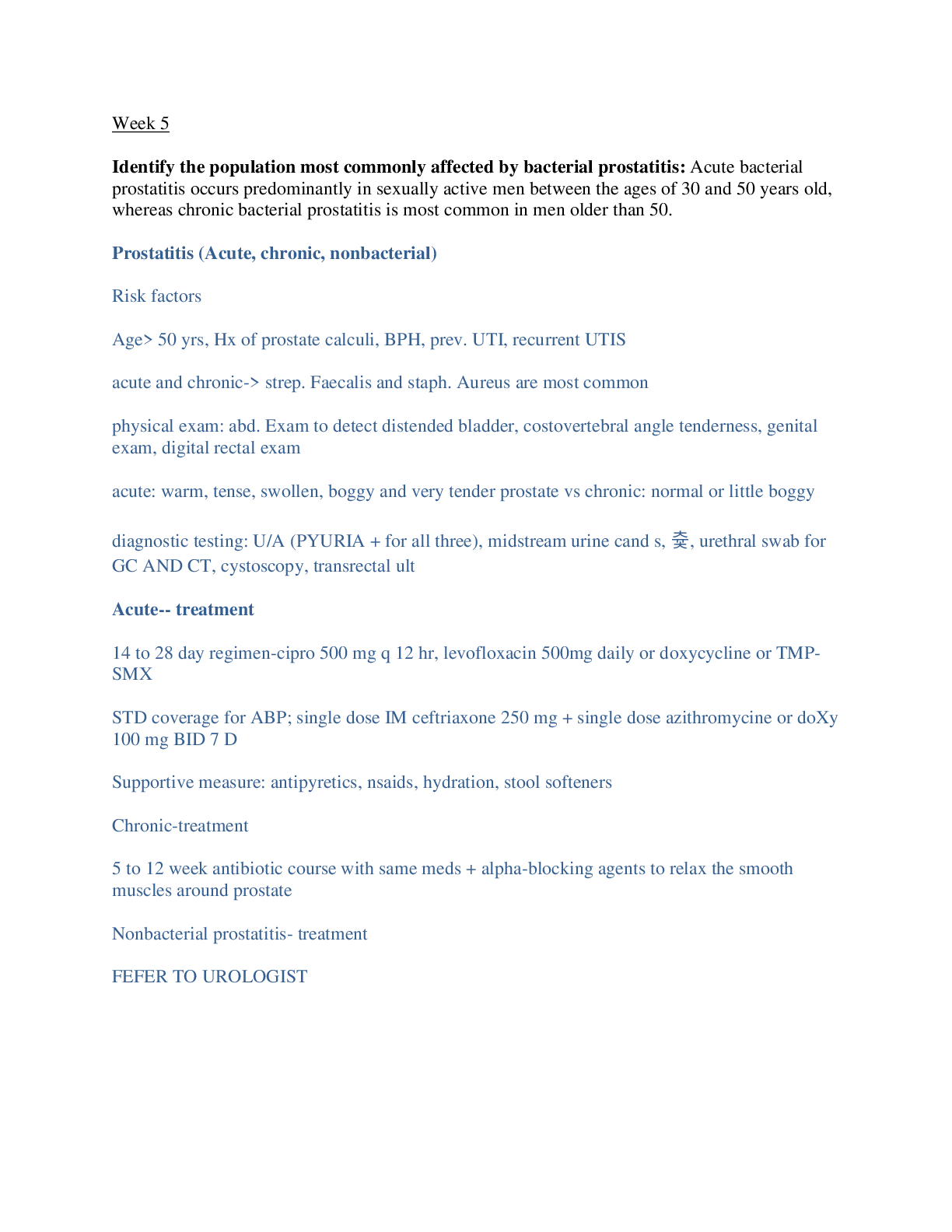
Buy this document to get the full access instantly
Instant Download Access after purchase
Buy NowInstant download
We Accept:

Reviews( 0 )
$17.00
Can't find what you want? Try our AI powered Search
Document information
Connected school, study & course
About the document
Uploaded On
Feb 09, 2021
Number of pages
22
Written in
All
Additional information
This document has been written for:
Uploaded
Feb 09, 2021
Downloads
0
Views
61



